When the Nokia N95 came out, the Nokia Music Player under S60 was, in my mind, one of the best mobile music interfaces available. That was before two big changes – the first was the introduction of touch screens and the iPod Touch/iPhone looking at ways to maximise the benefits of this UI tool; while the second is the explosion in online media services to consume and share music.

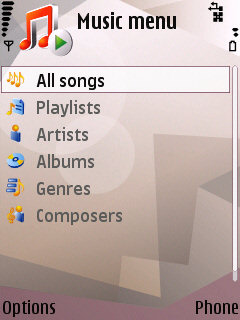
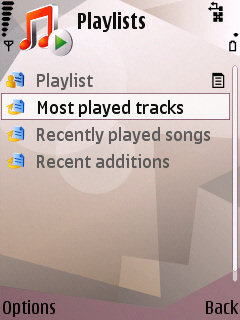
So it's time for the music player to have a reworking, and I want to look at three areas – content, online consumption and social activities around music.
Content on the device
Or, how do you solve a problem like video? While music has a consistent set of metadata (artist, album, track name and number, length, genre, etc), the same is not true of video, which makes it a little bit harder to sort. But it's crazy that you have to have more than one media player on your device. I'd look at a way to wrap up the music player with the video player (which itself would bring YouTube and other online video services under the hood).
By all means have icons that head to different parts of the application (so the quick launch bar in many S60 5th Edition phones at the moment, with its video and audio icons, would lead to the relevant screen in the same application), but let's gather everything in one coding place, in one sub-directory structure on the machine, so you can say to the users “your media is here”.
This modular approach to the player, with components for local playback of audio or video, streaming content from the internet, or caching streamed content for later playback when out of coverage has another benefit (apart from sending the lawyers down the rabbit hole of time shifting if you could cache video, but this is my article and I'm making it possible, okay?), and one that's already present inside Symbian, albeit in a rather complicated fashion. It is possible to write plug-ins to support different codes (such as Ogg Vorbis) but it's not the simplest of methods, even for developers.
So I would work on this area to make it clearer and easier to add in codecs, so the Ogg Vorbis fan club could write a plug-in that allowed this music format to be played; DivX support could be provided for video; and new streaming formats that have yet to be developed would slip in easily. It keeps the platform as open as possible, adds in a relative amount of future proofing and if we keep it sufficiently easy to understand, with the ability to add in new playback elements then opportunities arise. Look at "podcast" in the music app, and imagine this as the basic for a plugin to the UI - you could build up new paradigms of content and multimedia presentations alongside more regular consumption models – imagine not just buying an album, but the music videos and behind the scenes info, all available to drop into the music player from an artist or publisher? Making media purchases attractive on mobile is a worthy goal.
Offline
As I said at the start, the basics of the music player in terms of navigation around albums, playlists and the other expected UI elements pretty much work, so there does not need to be a huge amount of work here – I'm assuming that there will be a slight re-styling for Symbian^3's new UI and look and feel, but no fundamental changes to how you move around the application.
I would like to see two main additions though. The first is speed. There should never be any lag or jumpiness in the kinetic scrolling or moving between different views. With smartphones happily going up to 32GB and likely beyond that in the future, you can't do this live, you need to be caching for fast access to info and album art. It must be seamless.
Can we have search back? I know that N97 and N97 mini users can just start typing to look through their tracks, but that's not an option on the 5800 or other touch screen-only devices. Yes there is global search, but to have a find function in the media application seems such an obvious thing to do.
One of the strengths in Symbian OS is the assumption that this device can be run as your only computer – you can add and edit playlists, you can delete music, put it in the library from a download or email attachment and I wouldn't want to change this ability. Adding in an advanced option so the ID3 metadata can be edited on the device is probably the only missing element to make the phone a complete solution for listening to pre-recorded music.
Dowloading music
But the biggest advantage to the smartphone is that it is a connected media player, and as this was an area that had little impact on the N95 and the design of the Nokia Music Player for S60 3rd Edition, there's a lot that can be added here.
First up, something simple. Can we have the Nokia Internet Radio player back? Pretty please?
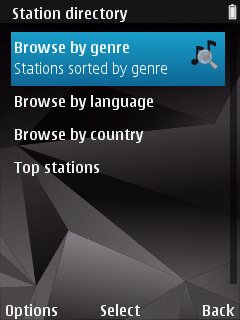
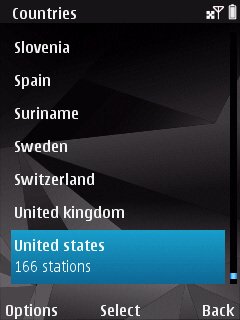
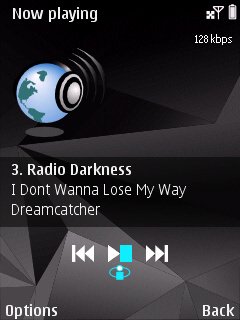
As part of a multimedia player handling video and audio, both offline and online, you should have streaming support on there, be it for MP3 files held on a server so you can preview podcasts, but also for radio stations and online content that is a genuine stream.
The Podcasting application used to be a totally standalone app, but is now integrated into the music player, and while the downloading portion is there as a separate icon, it still feels part of the music suite. If video is going to be integrated into our new media player, then let's make sure that video podcasts are as tightly integrated into the player as the audio podcasts are at the moment.
Content is, of course king, and Nokia have made huge efforts in the Ovi Music Store to ensure that people can get the music they want on to the device. Their unlimited offering in Comes with Music is still unique in the smartphone industry, but is hampered by being avaialble only for a few devices at the point of purchase. If the legal areas can be sorted, I'd love to see this made available to everyone who wants it for a monthly subscription, either direct to Nokia or through the mobile networks. It really does change how you consume music.
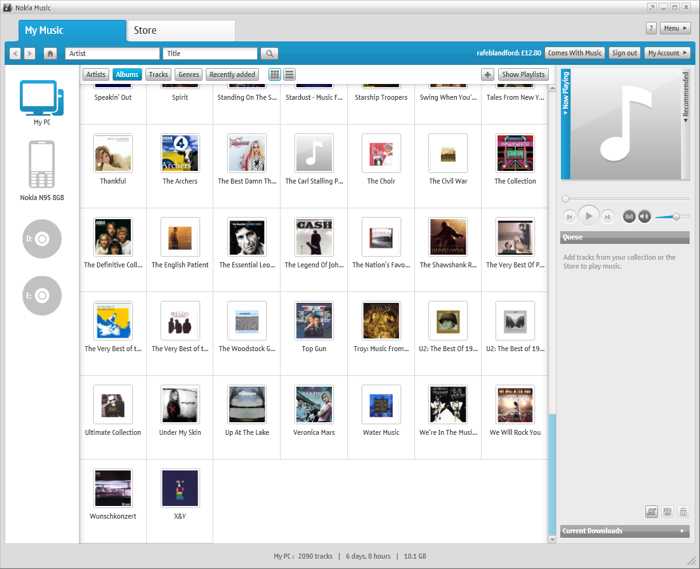
Other services offering a shedload of music are available, and while it's nice to have their own custom applications on your smartphone, I think there's a better way. Look at the idea of plug-in architecture and codec support above... and I see no reason why this can't be extended to allowing different content sources to feature in the media app.
There are already a number of music services on the smartphone you could roll into this architecture as well, such as the UPnP music player, but let's look at a third party app, Spotify. If we provide enough API and developer hooks into the code then Spotify wouldn't have to consider a full standalone application, they could just hook into the existing music player. The user is familiar with the app, it talks nicely to the low level elements of the OS as well as the UI, and using it provides a seamless experience for the end user.
Make it easy for people to use your app, and usage should rise.
Social media and sharing
Although we are all around the world on our own personal stereos, we don't listen to music in isolation. We love to share music, be it just the name of what is currently playing through services like Last.FM, or to pass around samples of the music so our friends can listen to it.
Microsoft's Zune had a number of good ideas, and one of them was the ability to share clips of music on one Zune to another, sort of like exchanging blank tapes at high school. The idea was that if you liked a song, off to the music store you went on the Zune. It didn't take off, but couple this with Comes with Music and you can bump and exchange tracks all day long.
There's no reason why support for Last.FM and pumping out your information to social networks like Facebook would not be part of my new application – provide an REST-like API call so third party apps can do whatever they want. If you think of media in the same way as you think of location then you get the idea where Symbian could go. Nokia already provide location to Facebook plugins, so adding to the music player is not a huge leap of faith.
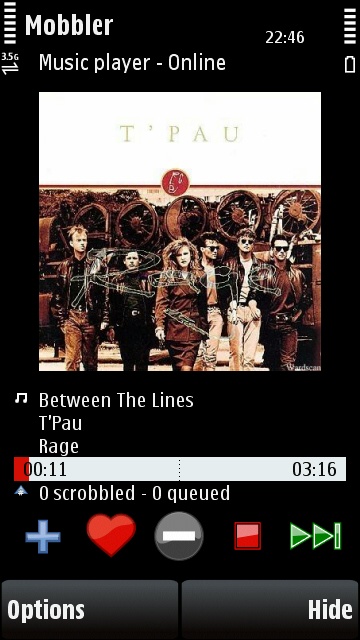
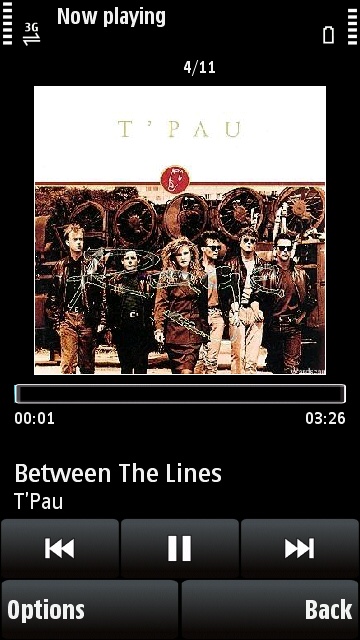
Desktop Support
Finally, in all this wonderful connected world, let's not lose sight of how the majority of music is pushed onto a smartphone – sideloaded via a desk bound computer and an application to sync and transfer music.
Nokia do have their own transfer and music playing application, in the PC based Ovi Music player. It's nice, while clunky, but ignores the multi platform landscape of Macs and Linux users on the desk. Which is why they should continue to have the smartphone detected as a Windows Media Playing device over USB – this gives a number of third party options for end users and a well documented route for new applications to be made. But it's time for Ovi Music to be made cross platform. Perhaps Qt might help out here?
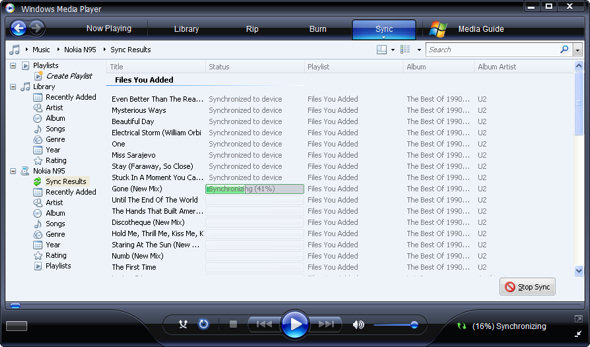
But the Windows Media sync is not enough. There needs to be conversion and library management of audio and video (and this could well tie in with a cross platform Ovi Media player – the tool is already in PC suite to convert video during a drag and drop copy). What would be nice is to have some podcast support in the new desk-bound media player – it's one of the areas where iTunes is still unsurpassed, treating the podcasts as one entity in terms of downloading, watching and still to watch, even though the files are synced over two devices. That's missing in Symbian just now – much as the idea of the Symbian smartphone being a standalone device makes many decisions easier, you can't lose sight that in may cases the relationship to a second computer is there.
Summary
S60 had the lead in music applications, but perhaps that was because nobody had really sat down to compete with them. Well the competition is there now. Not a huge amount of effort is needed to get back to first place, but with some thought a new media player could vault so far ahead that it would become the de facto “correct way of doing things”.
So, how about it?
-- Ewan Spence, June 2010.
